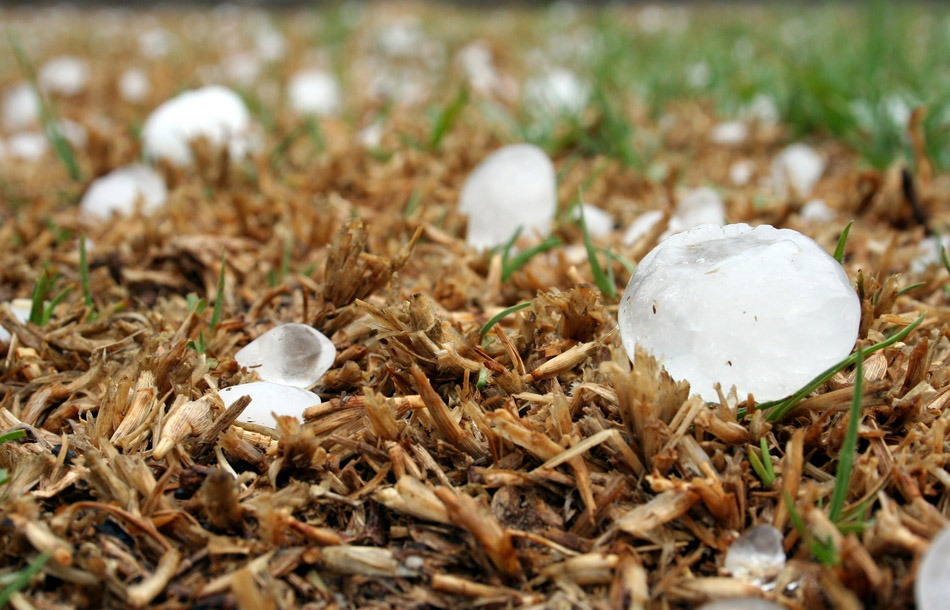Experts warn of mounting costs of hailstorms
International hail workshop outlines new research priorities
Aug 14, 2018 - by David Hosansky
Aug 14, 2018 - by David Hosansky

Scientists want to better understand and predict hailstorms, which cause billions of dollars annually across North America. (Image: Pixabay)
BOULDER, Colo. — Hailstorms are responsible for at least $10 billion in damage annually across North America, and these costs are expected to increase with more housing and other development moving into hail-prone areas, scientists warned at a press conference today.
Hailstorms also may shift regionally and potentially intensify with climate change, they said.
The panel of scientists made their remarks at the 2018 North American Workshop on Hail and Hailstorms, hosted by the National Center for Atmospheric Research (NCAR, which is sponsored by the National Science Foundation). The workshop brings together scientists, insurers, engineers, litigators, and others to address the growing impact of hailstorms and outline new research directions to better forecast these severe weather events and reduce their damage.
"Hail is an increasingly costly problem, but hail research in North America has largely languished since the 1980s," said NCAR senior scientist Andrew Heymsfield, a co-chair of the hail workshop. "Improving predictions and better protecting society will require a greater emphasis on hail research, including advanced radar measurements and developing an aircraft with the capability of flying into hailstorms to take detailed measurements."
He added that a hail-penetrating aircraft that was in service from 1970 to 2003 had provided important data about hailstorms that he used in several publications. Currently, scientists do not have a replacement aircraft that can take similar measurements.
Ian Giammanco, a workshop co-chair and the lead research meteorologist of the Insurance Institute for Business & Home Safety, emphasized the mounting toll of hailstorms.
"Hail is a forgotten peril, but it is responsible for almost 70 percent of the property damage of insurance claims from severe storms in the U.S. each year," he said. "It's time to attack this problem and find new ways to advance our ability to forecast, detect, and hopefully mitigate the hazards."
NCAR scientist Andreas Prein is studying possible links between hailstorms and climate change. He said that some signs point to severe hailstorms becoming more frequent in midlatitudes and less frequent in lower latitudes with climate change, but more research is needed to confirm this.
"We know that climate change is leading to more frequent and more intense thunderstorms, but it's difficult to determine the influence on hail because so many different ingredients have to come together to produce hail," he said. "This is an important area of research due to the already large societal impacts of hailstorms."
Kristen Rasmussen, a professor of atmospheric science at Colorado State University, will fly to Argentina later this year to study one of the world's most hail-prone areas. The RELAMPAGO field project, funded primarily by the National Science Foundation and U.S. Department of Energy, seeks to understand the initiation and development of powerful thunderstorms and hailstorms and how they can be better predicted to save lives and property. (RELAMPAGO stands for Remote Sensing of Electrification, Lightning, and Mesoscale/Microscale Processes with Adaptive Ground Observations.)
"Hail is a global problem," she said. "With better observations of hailstorms, we can improve weather forecast models of hail globally and have more advance warning of these damaging storms."
The three-day hail workshop, which is the first of its kind in the United States, is sponsored by the National Science Foundation, Insurance Institute for Business & Home Safety, and Building Envelope Consultants Ltd. It focuses primarily on five topics:
"Hailstorms cause significant damage to property and agriculture, with many becoming billion-dollar disasters," said Nick Anderson, a program director in the National Science Foundation’s Division of Atmospheric and Geospace Sciences, which funded the workshop. "The meeting offers an opportunity for university researchers and private sector partners to discuss the latest advances, with the goal of improving prediction and mitigation of hail events."